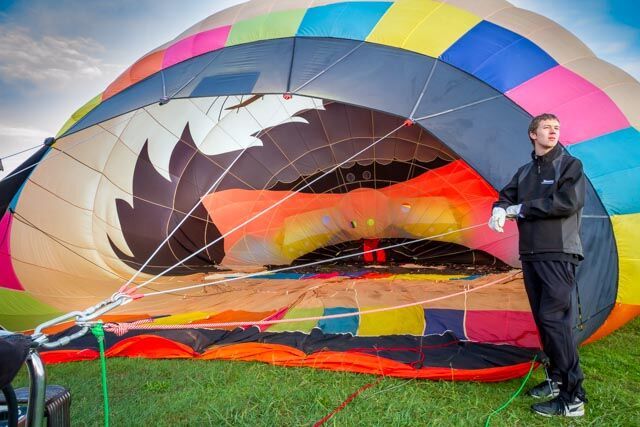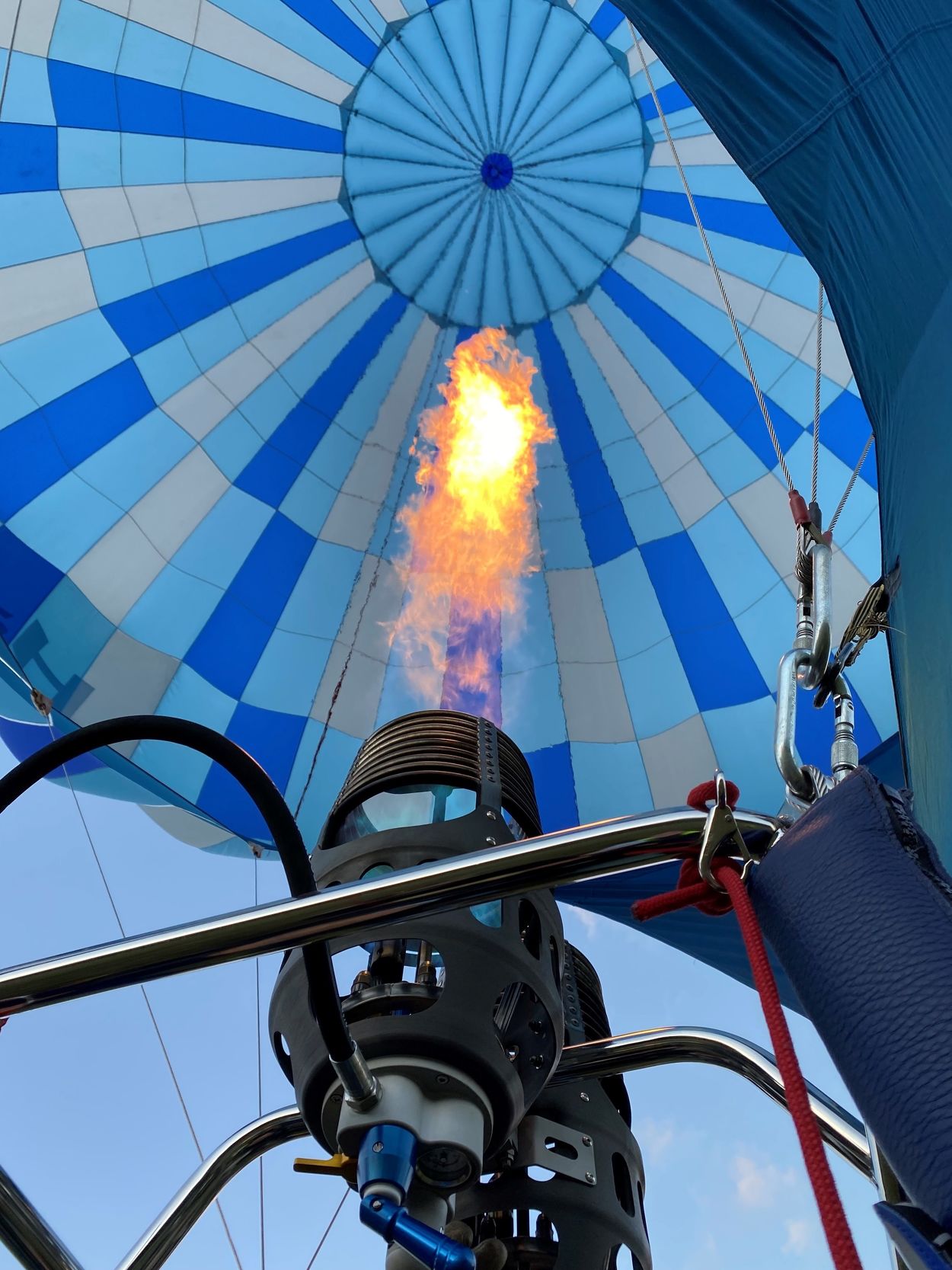How does a hot air balloon work?
A Pilot, Crew Chief and Crew are needed to get the balloon up in the air. Once all the safety checks are done, the envelope is filled with cold air using a fan. Once there is enough air in the envelope the pilot then adds heat, from the burners, which then stands the balloon up. Once standing, the pilot then continues to heat up the envelope until buoyant and the balloon will soon leave the ground. The pilot must keep using the burner at regular intervals throughout the flight to ensure that the balloon continues to be stable. Naturally, the hot air will not escape from the hole at the very bottom of the envelope as hot air rises.


The controls...
The controls for piloting a balloon are relatively simple….
1 – To move the balloon upwards – the pilot puts more heat in the envelope, the more heat the higher the balloon goes.
2 – To move the balloon downwards – the pilot can let the balloon cool or operate the ‘Parachute Valve’ at the very top of the balloon. It is essentially a circle of fabric, cut out of the top of the envelope. This is controlled by a long cord that runs down through the envelope to the basket. If the pilot wants to bring the balloon down faster, he pulls on the cord which will open the valve, letting hot air escape, decreasing the inner air temperature. This cooling of air causes the balloon to slow its ascent, or descend faster.
How does a balloon go from one destination to another?
The pilot can manoeuvre horizontally by changing the vertical position of the balloon. Often wind direction will vary at different altitudes. If the pilot wants to move in a particular direction they simply ascend and descend to the appropriate level and ride with the wind.


